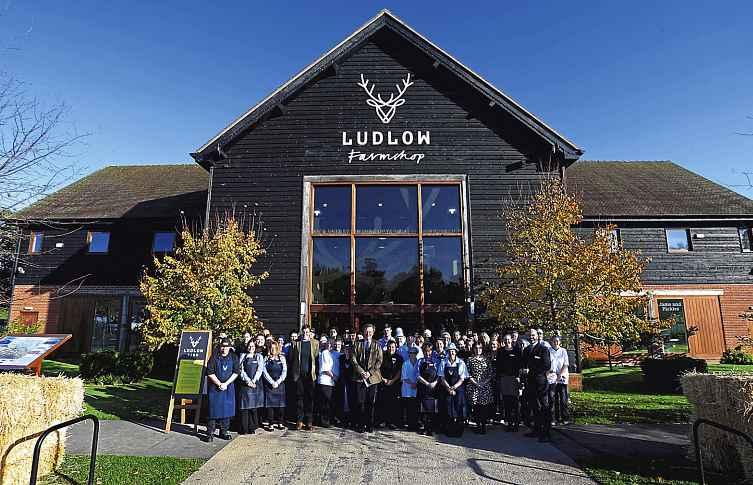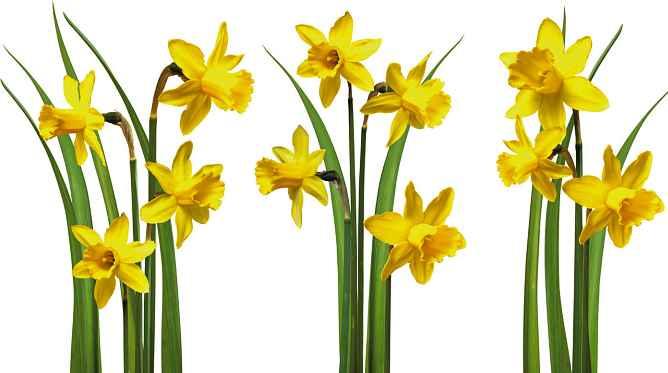
4 minute read
SPRING BOUNTY
Andy Richardson Looksatthe World Of Shropshire Food Producers As They Prepare For Theonset Of Spring
Spring is just around the corner And in Shropshire, that means the advent of anew season as nature bursts into life.
Crops are afew weeks earlier than they once were, the result of climate change, and it’s hard for farmers and producers to manage that change.
We’re still amonth or so away from the explosion of new produce that comes as the days lengthen, the sunstarts to shine and temperatures improve. But there’s plenty to enjoy over the next month, as farm shops fill with the last of the root crops and hardy winter vegetables, like artichokes, beetroot, cabbage, celeriac, kale, leeks, onions and parsnips.
Perhaps the first telling change in our county is the advent of spring lamb. The fields up and down the county are becoming increasingly full of lambs that leap like Tigger,their legs seemingly filled with springs, as they channel their energy and grow at real pace.
The county has its own breed of sheep, the aptly-named Shropshire Sheep, which is the oldest registered breed in the UK. They remain popular and far from being outdated, their strengths make them suited to the modern era. They thrive on pasture and produce meat of excellent quality,being both good terminal sires and excellent mothers. They have wool that is good enough for hand knitting. And they are the “tree-friendly”breed, being able to graze tree plantations andorchards without damaging the trees.
Sue Shimwell, Presidentofthe ShropshireSheep Breeders’ Association and Flock Book Society from 2001 to 2004, says: “The exact origins of today’s ShropshireDown are unclear but generally agreed to be as aresult of the improvement of the indigenous sheep of the Staffordshireand Shropshire border areas. These were hardy stock, not prone to footrot or scab, and produced wool of a superior quality
“The fleece however only weighed about 2-2.5 lbs and the sheep were slow to mature to asuitable butcher’s weight. Following the achievements of stockbreeders such as Robert Bakewell with the rapidly maturing NewLeicester and improvements of the Southdown by John Ellman, the sheep of The Long Mynd in Shropshire, Cannock Chase in Staffordshire and Morfe Common on the borders of Shropshire, Staffordshire and Worcestershire became subject to improvement during the first half of the 1800s.”
Due to continuing promotional work by the SSBA the Shropshire Down is enjoying aresurgence in popularity and is once again being recognised for the commercial attributes proven over many decades in many countries.
Ms Shimwell added: “Another quality of the purebred Shropshire is utilised by Christmas tree growers who, with careful management, value the breed’s ability to graze in conifer plantations without damagingtrees. Avoiding the use of chemical weedkillers satisfies the demands of today’s environmentally aware market for which asteady European export trade is being developed.”
Shropshire isn’t alone in having its own breed of sheep. The Clun Forest Sheep Breeders Society exists to promote that particularly breed.
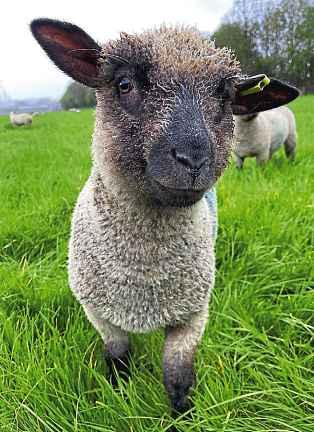
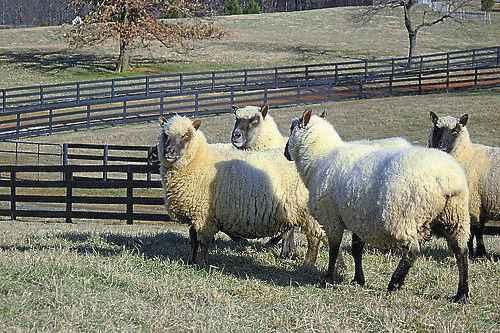
The Clun Forest breed takes its name from the old town of Clun and the surrounding forests. It is situated in the southwest corner of Shropshire and is bordered by Montgomeryshire and Radnorshire. At the beginning of the 19th centurythere were 12,000acres of common land in this area. The greater part of this land rose to an altitude of 1,500ft and has theremains of “pounds”, “druid circles” and “Offas Dyke”.
At this time both theforest and common lands were inhabited by this breed of sheep hence the name. It is likely that pastoral or semi-nomadic shepherds who lived in the forest about 1,000 years ago originally bred these sheep.
The Clun Breed peaked as the most popular breed in the UK, until the fashion for hybids and continental breeds took over However,the current age of austerity and people demanding value for money,means the Clun is abreed for the current economic climate.
Of course, the presence of great lamb in our county requires agood network of local, independent butchers, who work with farmers and slaughterhouses to make it available to local customers. Across the county,there are numerous highquality butchers, many with such good reputations that people travel considerable distances to visit.
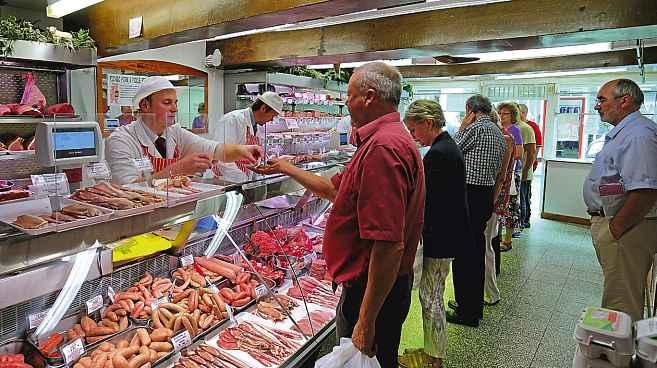
Paddy Ryan, at Much Wenlock, is a goodexample. Paddy and Sue Ryan have been running the business since 1983 along with their sons Mike and Sam Ryan since early 2000. More recently,in2014 Mike’s wife Amber joined the business. The shop prides itself on being a traditional butcher and piemaker.A spokesman said: “Wemake all our own pastry and we use all natural ingredients, sourcing our supplies as locally as possible.
“Weproduce awiderange of products including porkpies, gravy pies, quiches, and individual savoury items, as well as our new additions to the range, sweet puddings, and baked goods, that are made on-site and cooked fresh daily.Wealso cure our own bacon and make our all own sausage along with producing the majority of our cooked meat range.”
Ludlow has anumber of great butchers, including thebrilliant DW Wall &Son, whose shop is as pretty as a picture, with stringsofpheasants hung outside to cure. It is oneofShropshire’s best-knownfamily butchers and has been preparing and supplying high-quality meat for many years.
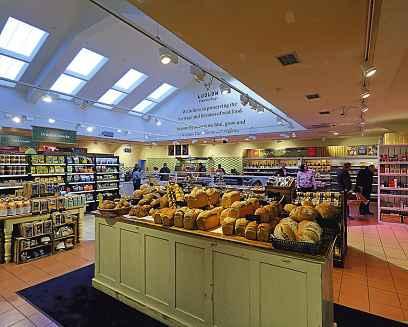
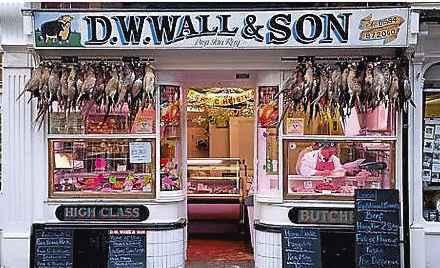
And then there’s thebrilliant Ludlow Farm Shop, just afew miles from the south Shropshiretown.
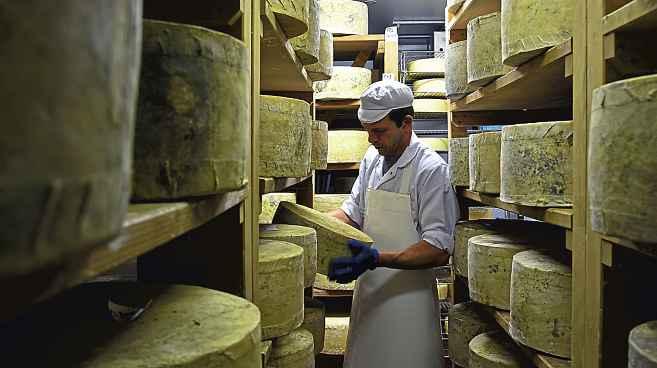
It serves Oakly Park Estate, an 8,000acre holding, which uses 6,500 acres for farming, with 3,500 devoted to arable and 3,000 to livestock.
The Estate has abusy time of it at this time of year.Ithas 2,500 ewes, made up of five breeds, with the desired effect of getting the best confirmation, growth levels and birth weights (survivability), good mothers and good feet (sheep suffer from foot rot alot). Theyideally hope to get two lambs per year per ewe, so overall 5,000 lambs in total.
BELOW: Shropshirebutchers Paddy Ryans in Much Wenlock, and D.W.Wall &Son, Ludlow
